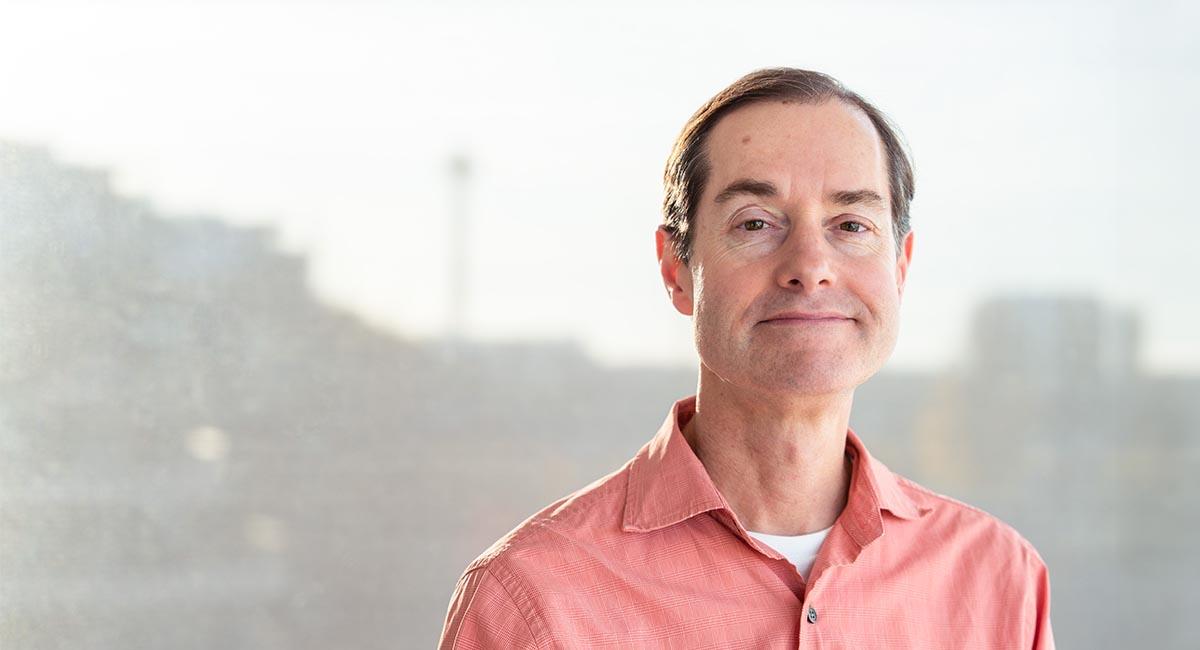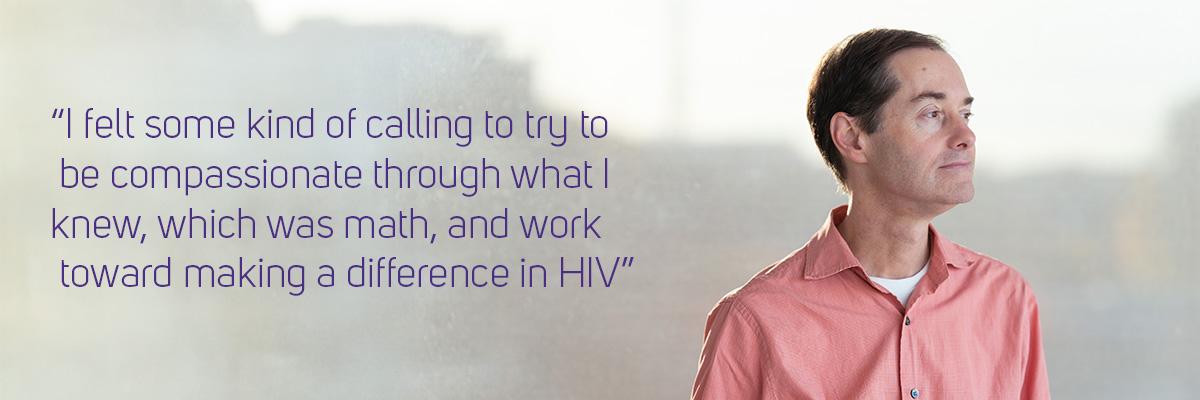
In the early 1990s, Peter Gilbert was a University of Washington (UW) undergraduate, wondering what to do with his math degree. At this time, the HIV/AIDS epidemic was reaching its peak in mortality rates, and treatment for HIV (antiretroviral therapies) had not yet been developed. Not only were communities devastated by the epidemic, but people with AIDS were stigmatized for being infected. Gilbert wanted to do something to change this.
“I felt some kind of calling to try to be compassionate through what I knew, which was math, and work toward making a difference in HIV,” Gilbert said.
Gilbert has been making that difference, both in the field of HIV, and most recently, COVID-19. Gilbert is now a biostatistician and professor at UW, in the School of Public Health and Fred Hutch Cancer Center, where he works on the design and analysis of clinical trials of candidate vaccines for HIV and other infectious diseases.
He pioneered a field of biostatistics named “sieve analysis,” which can help researchers create vaccines more efficiently. This method allows researchers to compare the infection strains between vaccinated and unvaccinated individuals and estimates the odds that a viral strain could penetrate the vaccine protection barrier. He has also focused on building statistical methods for “immune correlates of protection” that find antibody biomarkers that can distinguish individuals by their level of vaccine protection. Doing this can drastically speed up developing vaccine boosters and understanding whether vaccines may be effective in specific populations, like children.

While researchers have yet to find an effective vaccine for HIV, the methods learned during the past few decades of research have paved the way for developing a COVID-19 vaccine relatively quickly. In early 2020, Gilbert received a phone call letting him know that the federal government would fund their HIV Vaccine Trials Network statistical team to do research on the COVID-19 vaccine for the next three years. This was part of “Operation Warp Speed,” a public-private partnership between the U.S. government and companies to accelerate vaccines, therapeutics and diagnostics for COVID-19.
“It was really good timing, because our team had done so much work in HIV vaccine research, in building methods, tools, paradigms and study designs, so that when COVID-19 came along, it felt like we could pretty much appropriate what we had already learned and apply it,” Gilbert said.
The central puzzle Gilbert faced was determining whether scientists could find an antibody biomarker that could predict whether a COVID-19 vaccine was working or not. This was important because traditional approvals of vaccines involve two large scale trials that are time intensive and costly. Finding a faster way to understand vaccine effectiveness was critical to saving lives during the pandemic.
Gilbert and the team of researchers he worked with built innovative statistical analysis plans that allowed understanding of the antibodies created by the immune system in persons who received a COVID-19 vaccine. Researchers could then compare those antibodies — created by gold-standard tested vaccines through intensive trials — with the level of antibodies in persons who had received a new booster for COVID-19, to determine if the booster was providing a similar level of protection. If so, then that booster could be authorized.
While studying antibody markers to determine vaccine efficacy had been done for decades, the statistical methods that Gilbert and his fellow scientists used for the COVID-19 vaccines were new.
“The innovation in statistical methods hadn’t been used before in previous vaccine studies,” Gilbert said. “With faculty in the Department of Biostatistics, we really like working on open problems like that.”
The work was a collaborative process amongst teams of statisticians, both within the UW, Fred Hutch, and partners at the National Institute for Allergies and Infectious Diseases. Math was core to this work, as statisticians were tasked with writing detailed statistical plans and making sure every computer program was reproducible. Among the many people integral to developing these innovative methods were fellow Department of Biostatistics faculty Youyi Fong and Marco Carone, and students Lars van der Laan and Avi Kenny.
Gilbert joined regular calls with members of the U.S. Food and Drug Administration and European Medicines Agency to share preprint papers and recommendations. Their work was being used by regulators in other countries to determine vaccine authorization. Communication was integral to the work, connecting developing methods to ongoing research and putting that research into practice through the vaccine distribution.
Communities also played a large role in shaping the vaccines that were developed.
“The studies are not going to deliver any answers unless we have the community,” Gilbert said. “Without communities, we can't enroll people in studies. The research is only as good as the quality of study so retention of participants and persons wanting to come in to donate blood, get nasal swabs are critical for that.”
Groups such as the gay community, who faced stigmatization and government inaction at the height of the HIV epidemic, were hugely influential in the late 1980s and early 1990s in speeding up the HIV drug approvals. This laid the groundwork for policy changes that allowed for COVID vaccines to be rapidly authorized.
Before the HIV epidemic, it wasn’t common practice for the voices of populations to be included in shaping the research process. But the gay community’s advocacy also changed that. Gilbert points to the HIV Vaccine Trials Network (headquartered at Fred Hutch) as a leader in including diverse community voices in the research process.
This is critical to making sure treatments and vaccines are effective across demographic groups, Gilbert said.
“Communities are the prerequisite for everything,” Gilbert said. “The only way to do a study legitimately and ethically is to have the communities understand the research and participate in the process of designing the research, make sure people are well informed, and that we're posing questions that the communities really care about.”
Methods to Research to Practice Continuum
This story is part of a series sharing how our faculty navigate the methods to research to practice continuum, or the journey from developing a research idea, to using a scientific strategy and conducting research, to working alongside communities so that findings have meaningful impact.
Written by Kate Stringer as part of the series, "Methods to Research to Practice Continuum" published by the UW School of Public Health. Republished with permission.